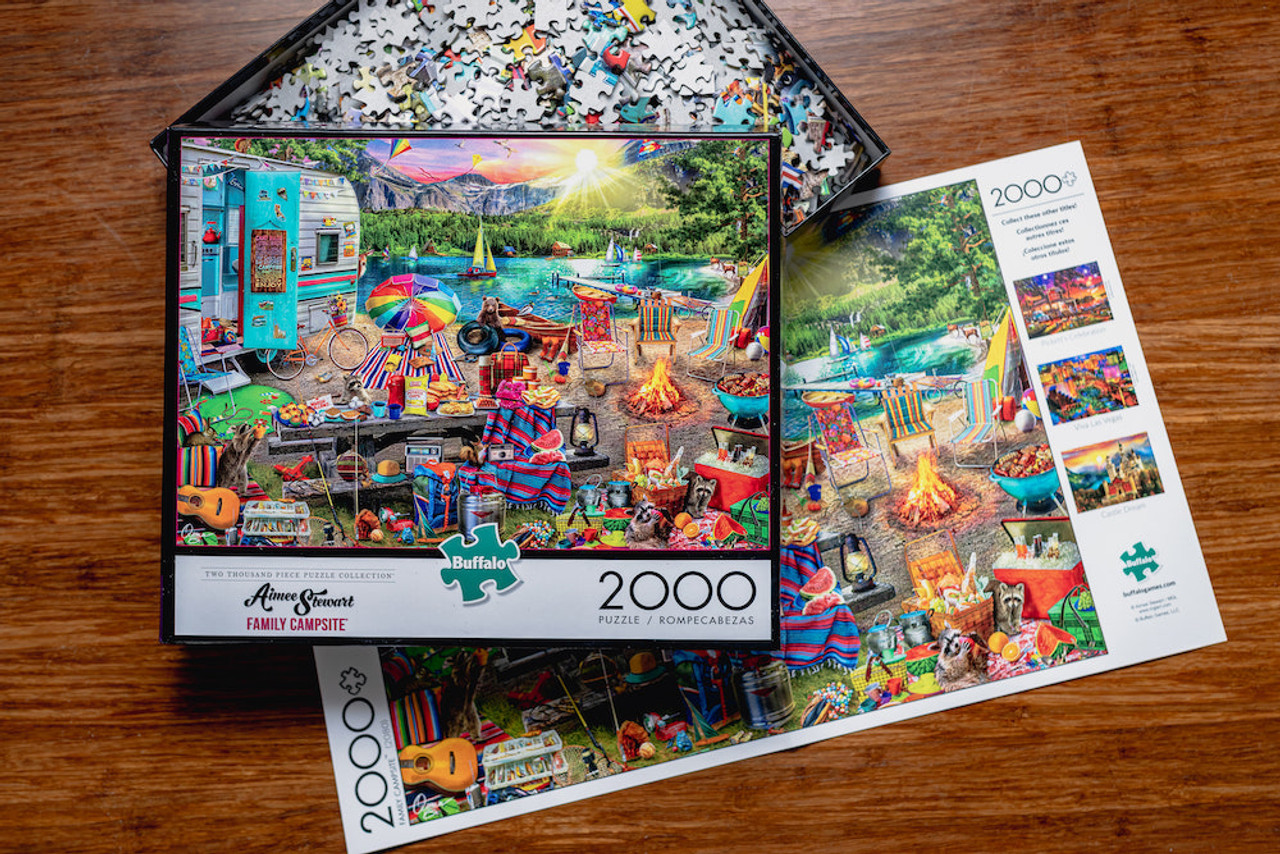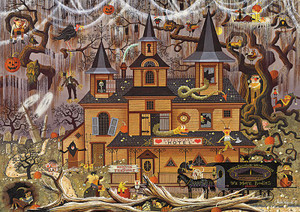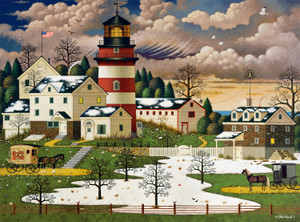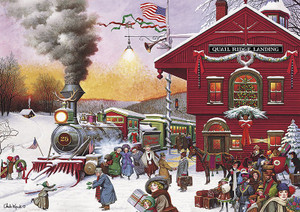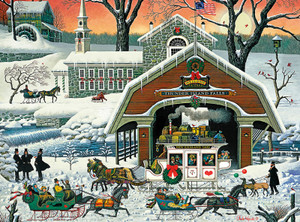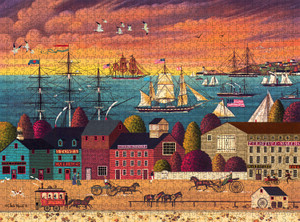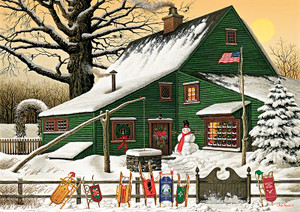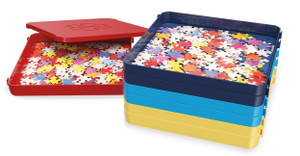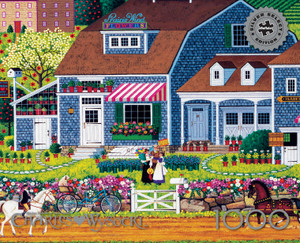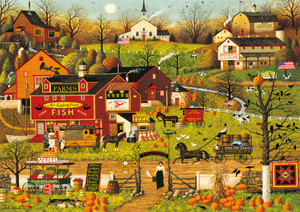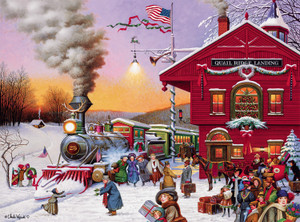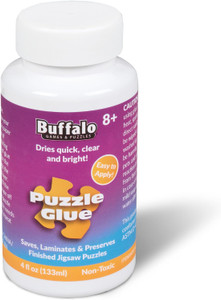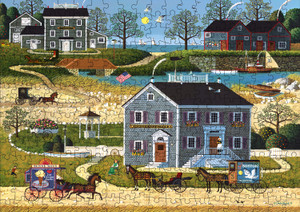Posted by Buffalo Games on Apr 13th 2022
The Fastest Way to Solve a 2,000-Piece Puzzle
If you’re an avid, experienced puzzler, you most likely have a plan of attack you follow whenever you put jigsaw puzzles together. If you’re a beginner, you might be interested in learning what many active puzzlers do to finish jigsaws quickly.
There are no set rules when it comes to jigsaw puzzles. However, there are plenty of tips, tricks, and suggestions that you can keep in mind to speed up your game.
The best puzzlers in the world, including past and reigning jigsaw puzzle champions, have devised their own routines, and their success shows.
Record-Breaking Jigsaw Puzzles Times
There are many world records for puzzling that have to do with speed. From the fastest Hasbro puzzle to the fastest 1,000-piece puzzle and everything in between, here are some of the records set with jigsaws.
Tammy McLeod holds the Guinness World Record for the fastest time to complete The Hasbro Puzzle with a time of 9 minutes, 58.32 seconds. The puzzle is oval-shaped and has no box top to look at for reference.
For 500-piece jigsaw puzzles, the record for the fastest completion is held by Joellen Beifuss, with a time of 54 minutes, 10 seconds.
At the 2020 British Puzzle Championship, Sarah Mills completed a 1,000-piece jigsaw puzzle depicting London landmarks in 1 hour and 40 minutes, setting a new world record.
While most people don’t set out to beat any of these records, they’re usually still interested in learning the fastest ways to solve jigsaw puzzles for adults.
Tips for Solving Jigsaw Puzzles Fast
Following are some tips and tricks to help you speed up the process of putting together a 2,000-piece puzzle.
Plan and Prepare
Puzzles can seem simple enough to figure out: Open the box, dump out the pieces, and commence puzzling, right? Not so fast. Time spent planning and preparing will make a world of difference in how long it takes you to solve jigsaw puzzles.
Specifically, time spent organizing your attack plan before you even get started will give you a faster and a more mentally satisfying build, too. This means less frustration, less panic, and fewer gray hairs while you’re trying to complete jigsaw puzzles for adults quickly.
Choose a Great Puzzling Surface
Your workspace holds the key to putting 2,000-piece puzzles together. Make sure your work surface is level and that it’s a color that contrasts with the colors in your puzzle.
Most serious puzzlers will work on a surface that’s white or black, which allows them to visually separate the colors, lines, and designs in the puzzle pieces more easily. Many people also prefer to work on glass tabletops because they provide clarity and don’t distract from the colors and designs on the puzzle pieces.
Let There Be Light
Speaking of being able to see, pay attention to the type of lighting you use for puzzling. An overhead light is the best type. A table lamp or desk lamp that you can adjust to shine directly above the puzzle works well, too.
Avoid floor lamps, though, because unless they’re extremely tall and can shine from directly above, they will cast strong shadows on all of the puzzle pieces. The shadows can make it more difficult to see the pieces clearly and slow you down considerably.
Top o’ the Box Top
A touchy subject among puzzlers is whether people should use the box top as a guide during puzzle assembly. Some people consider it cheating, and others don’t. Either way, referring to the photo of the completed puzzle as you work will speed up your progress and make the experience easier.
Keep ‘em Separated
Separate all of the pieces according to pattern or color. Grab a few (or six or a dozen) sorting trays to keep the pieces organized and to help prevent them from disappearing while you’re working.
You should also separate all of the edge pieces and start your puzzle with those. Place each sorting tray with its pieces around the puzzle near the area where you think they’ll go.
Focus on the Easy Stuff First
Once you have the border pieces assembled, choose a section and work your way inward toward the center of the puzzle. Then, move on to other pieces that are easily identifiable. These might include pieces with faces or eyes, unique lines, and bright spaces.
Connect all of the similar shades and features first so you can reduce the number of pieces you’ll have to search for later. Don’t start with the hard pieces just to “get them out of the way. ” You can end up spending far too much time looking for needles in haystacks.
You should also focus on gradients, patterns, and colors that have the fewest pieces first. The fewer the pieces in a group, the faster and easier it will be to complete that section.
Go Blind
It’s a good idea to practice getting into the habit of ignoring pieces that you aren’t looking for. It may sound strange at first, but going “non-piece blind” will decrease your finish time significantly.
Learn not to “graze” as you look for pieces. Looking for certain pieces becomes easier when you train your eyes to zero in on a specific print, pattern, or color.
Don’t Go Blind
When you’ve “gone blind” to find a specific piece and begin to get frustrated, or you’re spending too much time looking for it, move on for a while. If you can’t find a piece, don’t get too hung up on it. Move on to another section, and usually, the elusive piece will turn up when you least expect it.
As you practice focusing on finding pieces you need and ignoring pieces you don’t, you’ll find that you will spend less and less time hunting. The time it takes you to complete 2,000-piece puzzles will go down with each completed one.
Keep practicing, and you’ll be an old hand at solving 2,000-piece jigsaws in no time at all!
